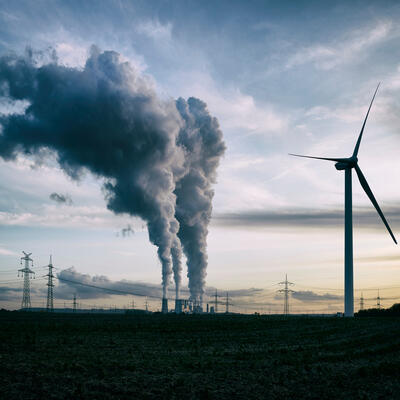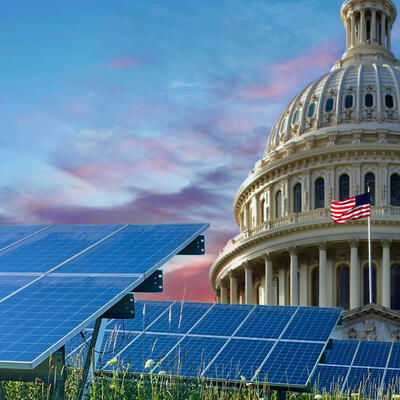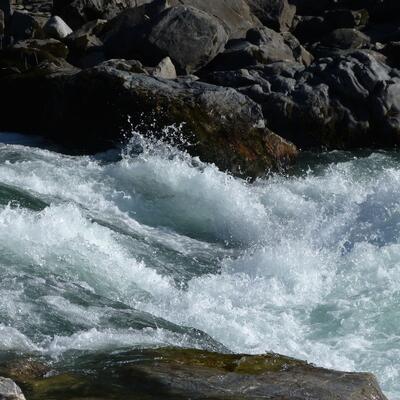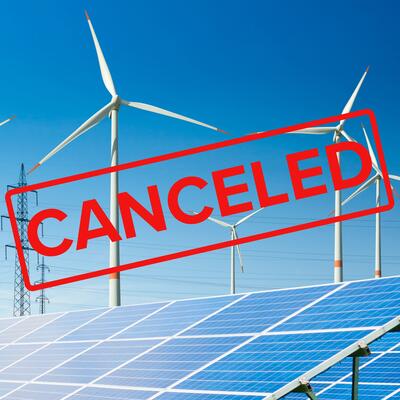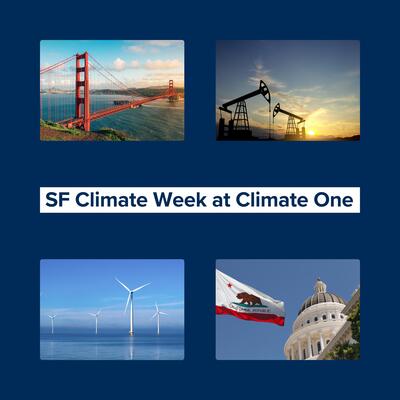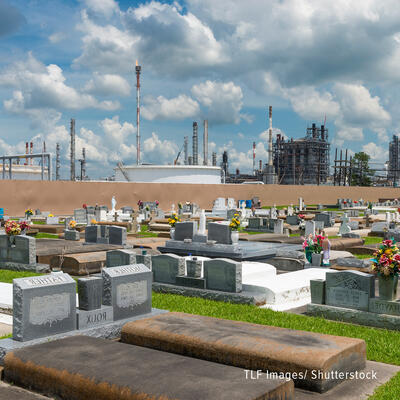
What We’re Watching in Climate Now
Guests

Catherine Coleman Flowers
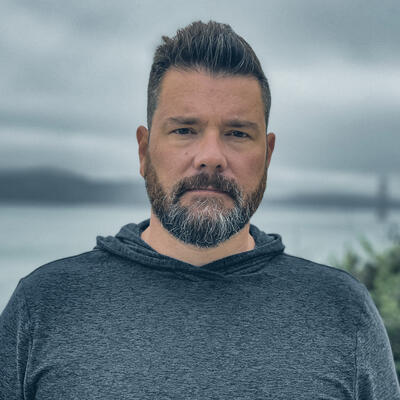
Nat Bullard
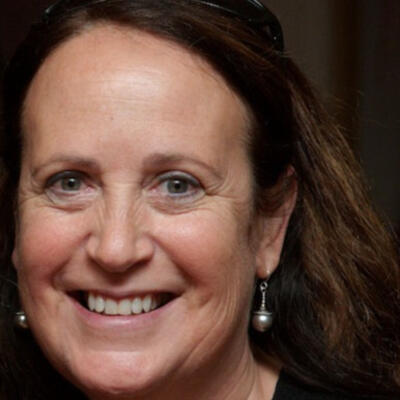
Felicia Marcus
Summary
2022 was a historic year for both climate policy and disasters. The year saw historic investments in clean energy, electric vehicles and home electrification. Those policy victories came amidst some brutal climate fueled natural disasters, from a hurricane that nearly wiped out parts of Florida’s southwest coast to unbearable heat waves and droughts.
In the western US, one resource on everyone’s mind is water. The southwest has seen the driest 22 year period in 1200 years. Then came the torrential downpours in California that flooded neighborhoods and was responsible for 20 deaths. But the rain was badly needed in an area so starved of water. Felicia Marcus, a visiting fellow at Stanford University's Water in the West Program, says, “In the geophysical record we know we've had 40, 400-year droughts and we've had biblical era floods. And so, I think it's a wake-up call to be both grateful for all the precipitation we get, and to use it wisely to get it into the ground.”
Dwindling water from the Colorado River and the Sierra Nevada mountains may force structural changes that have been put off for decades. Marcus says, “I think some of it will be reforming water rights in the long run. In the short run, in an emergency, all bets are off in terms of those traditional arguments about water rights. I mean you can argue you have senior water rights, but if the water is not there it’s not there.”
After a significant year for climate legislation with the passage of the Inflation Reduction Act, the Infrastructure and Jobs Act and the CHIPS and Science Act, now those laws have to be implemented. And on that front, there is much left to do. Nat Bullard, a senior contributor at Bloomberg NEF and Bloomberg Green, worries that a slow permitting process will stall the build-out of new transmission and manufacturing:
“Unfortunately this has become rather political, despite the fact I would say that doing something on fallow land where you're going to receive a steady cash flow for decades should in theory be a good economic driver for development.”
The good news is that prices of clean energy have been less affected by inflation than fossil fuels. Bullard remarks, “Even slightly more expensive wind and solar is still…more competitive than it's ever been with the options for fossil fuel firepower like coal and natural gas.”
Last year polysilicon, a key component of solar cells, was in tight supply which disrupted planned solar projects. That looks to be changing, as Bullard says, “What’s happening with that right now is that it is lurching from under to now very much oversupply, which is going to drive the price down by about 75% from its highs last year in August.”
The Biden administration has made the biggest commitment ever to environmental justice. A new initiative called Justice 40 was created in an effort to assure that 40 percent of federal investments flow to disadvantaged communities. A huge part of the creation of Justice 40 is the White House Environmental Justice Advisory Council, or WHEJAC. Catherine Coleman Flowers is an accomplished EJ advocate who currently serves as co-vice chair of the White House Environmental Justice Advisory Council.
She says, “I would like to see not only people get funding but to actually see some built projects that can have an impact on the people's lives, you know, in terms of decreasing pollution, making sure that we reduce emissions that frontline communities are not suffering from lack of water or contaminated drinking water.”
Episode Highlights
4:00 Felicia Marcus on water rights and drought in the west
8:28 Felicia Marcus: “ In the Colorado you've got this massive river that goes through seven states and has these huge reservoirs beyond the scale you could ever have in California and we’ve been watching it go down for over 20 years. And there've been really pretty impressive agreements among the seven states and water agencies that have forestalled you know this dire state of affairs for about six years so they deliver some credit for it. But it's not enough to deal with the Armageddon-like consequences of getting to the end of that very predictable chain of events with hydropower going out even sooner than getting to deadpool.”
19:18 Nat Bullard on the outlook of clean energy markets.
27:35 Nat Bullard: “I think the things that are exciting are first technologies that build off of the abundance that's been created by wind and solar and lithium-ion batteries and by extension, electric vehicles. So, if we think of those as sort of technologies, I wouldn't call them solved as such but they work very well. They’re deployed at a relatively low cost and a very high volume. They’re reliable, they're beginning to make a dent in the systems in which they operate.”
38:06 Catherine Coleman Flowers on the outlook for environmental justice.
48:13 Catherine Coleman Flowers: “I would like to see not only people get funding but to actually see some built projects that can have an impact on the people's lives, you know, in terms of decreasing pollution, making sure that we reduce emissions that frontline communities are not suffering from lack of water or contaminated drinking water.”
Resources From This Episode (4)
Full Transcript
Note: Transcripts are generated using a combination of automated software and human transcribers, and may contain errors. Please check the actual audio before quoting it.
Greg Dalton: This is Climate One. I’m Greg Dalton. 2022 was a big year for climate disasters and policy, and this year promises to be a banner year as well. There are many areas to watch, including climate-driven weather events bringing too much and too little water in the West:
Felicia Marcus: You can argue you have senior water rights, but if the water is not there, it’s not there.
Greg Dalton: Environmental justice efforts are finally seeing some big federal backing, along with more money. Will it reach front-line communities in the ways they hope?
Catherine Coleman Flowers: I’d also like to see that communities of color and poor communities and rural communities are not just relegated to failing septic systems. And when we get more water, whether it’s in California or Alabama when it gets a lot of rain, these systems tend to fail.
Greg Dalton: Meanwhile, the outlook for innovation in a new energy future looks promising:
Nat Bullard: A lot of what we see companies doing is creating what will be a better version of what we have today.
Greg Dalton: What We’re Watching in Climate Now. Up next on Climate One.
Greg Dalton: This is Climate One, I’m Greg Dalton.
Ariana Brocious: And I’m Ariana Brocious. Today on the show we’re teeing up a bunch of topics we’ll be watching in the coming year in the climate realm. And there are a lot!
Greg Dalton: For sure. Let’s remember that 2022 was a HUGE year for clean energy. For decades, the focus has been getting major US climate policy in place. Now, that’s happened, with three big bills: the IRA, Infrastructure, CHIPS. Now the focus is on implementation, The overall question is where is the money going? Where is EV charging being built, what companies are getting DOE loans? Will we get more highways or more transit?
Ariana Brocious: Yes, lots to see play out after the midterms and with the new Congress in session. How much will politics – at the local and national level – affect climate progress and action?
Greg Dalton: Right, we talk about the national, but most of the money flows through state and local governments. And actually, some of the biggest beneficiaries of new federal spending are the districts of members of Congress who opposed the IRA. I’m also keeping an eye on the climate impact of the farm bill that could support no-till farming, cover cropping and other practices.
Ariana Brocious: Next week we’ll bring listeners our conversation with U.S. Agriculture Secretary Tom Vilsack about climate smart agriculture.
Greg Dalton: After talking with him I’m still wondering how long we should keep subsidizing corn ethanol when EVs are taking off. Ariana, what else are you paying attention to?
Ariana Brocious: Living in Arizona, I’m very focused on water shortage on the Colorado river, we’ll get into that with today’s first guest Felicia Marcus in a couple minutes. Aside from that, as a consumer I’m pretty about IRA money and looking at some of those incentives and getting my first EV, maybe even solar. Honestly a bit confused and overwhelmed by how much work it takes to navigate these things. I just read that we’ll have to wait another year for some of the IRA money to roll out through state programs. And we need supply to catch up. I ordered an induction stove in December and it still hasn’t shipped yet.
Greg Dalton: Want to mention a moment of falling for exaggeration around childhood asthma and gas stoves that broke into the national conversation recently. That really fed into a pre-existing narrative. I accepted it without really checking it. And I was really impacted by Andy Revkin, longtime climate journalist writing: “The #gasstoves news blitz is media whiplash at its worst. Strategic drama created by anti-fossil orgs.”
Ariana Brocious: That’s not to say that there aren’t plenty of good climate and health reasons to abandon gas stoves. But maybe that link between childhood asthma and gas stoves is not as clearcut as some of the reporting was making it sound. There are several more major topics we’re keeping an eye on, and we’ll touch on those a bit later in the show. For now, let’s jump into your interview with Felicia Marcus, a visiting fellow at Stanford University's Water in the West Program.
Greg Dalton: Snowpack and rain in many places are double normal at this time of year. What’s it been like for you and is this going to bust a megadrought in the American West?
Felicia Marcus: It's a mix of glee and self-correction. So, it's fantastic. You know I've gone out in the rain I've looked, you know, turned my face toward it, and said thank you. Because I know how important this is for all the parched areas of the state. And it's not just the Sierras it’s the Colorado basin too which is also getting massive precipitation, but it's always tempered by knowing a little too much. The drought is not over, you know, too early for a “drought is over" party but it's a great start but it could get hot. And if it gets hot it could melt and it could flood people out and we can end up in the same situation we were last year where we thought we were in good shape and then the tap turned off. So, you just never know what's gonna happen so it's hard to just be gleeful. So, you know, the next thing we turn to is when do we get more of them a little later in the year. How do we make sure we space them out so that they don't flood anybody out and hurt people and property? So, there's just all those thoughts. But it's under laid with a glorious amount of happiness.
Greg Dalton: What lessons does the American West need to learn from this biblical deluge in terms of capturing all this water, etc. what do we need to learn from this?
Felicia Marcus: There are two things. One is I think to be humbled by what we don't know about nature and that we can't look at the last hundred years as a predictor of what's going forward as we have kind naïvely. Because in the geophysical record we know we've had 40, 400-year droughts and we've had biblical era floods. And so, I think it's a wake-up call to be both grateful for all the precipitation we get, and to use it wisely to get it into the ground, but also to be far more precise on how we use it for agriculture and in urban areas not hemorrhaging it on lawn green carpets during the middle of the summer, let alone a drought. There's a lot we can do buttoning up leaks. So, using it more precisely when we have it and getting it into the ground as much as we can when we have it but also preparing for floods. And I really think it's finally taking hold, but it's not just building more dams. It's getting it into the ground. And the way to get it into the ground isn't just it doesn't go into the ground as fast as it does into a reservoir, we can never build enough reservoirs to match the size and scale of the groundwater basins we have. It's doing things like setting back floodplains, nature-based solutions where we allow the water to flow out over a large area which dissipates the storm force. It has flood prevention because you're getting it away from urban areas that right now are right up to these flood walls and levies. And then you’re giving it the time to sink into the ground. I mean there’s so much we can do to both capture it more intelligently for multiple benefits and then use it more wisely over the course of multiple years, not just year-to-year.
Greg Dalton: And the rains in the west recently have been very fast-moving just, you know, storm after storm after storm atmospheric river after atmospheric river. That's a fast-moving crisis. Other water crises move very slowly. We’re at a reckoning point on water supply for the Colorado River. The two reservoirs Lake Mead and Lake Powell are at historic lows and if more isn’t done Lake Mead is in danger of reaching deadpool status within a couple of years. That's when levels are too low to be piped out of the reservoir and that also threatens hydropower. How significant is this?
Felicia Marcus: It’s massively significant. like there's a Barbara Tuchman book called The March of Folly that you may recall, that I'm very fond of. And it talks about how public policy makers, kings sometimes and presidents and other times have all the facts they need to deal with an issue and they somehow ignore it for a variety of reasons. King George losing the colonies being a prime one. The Vietnam war all kinds of examples where you have all the facts you needed to make a different choice and yet you didn't. And in the case of the Colorado, which is structurally somewhat different than our Sierra system, which is a lot of short rivers. In the Colorado you've got this massive river that goes through seven states and has these huge reservoirs beyond the scale you could ever have in California and we’ve been watching it go down for over 20 years. And there've been really pretty impressive agreements among the seven states and water agencies that have forestalled you know this dire state of affairs for about six years so they deliver some credit for it. But it's not enough to deal with the Armageddon-like consequences of getting to the end of that very predictable chain of events with hydropower going out even sooner than getting to deadpool. And this crisis point that we've gotten to where the federal government has had to step in and say, look, either you come up with something or we’re gonna impose something you're not gonna like. In the meantime, you have the players, I'm not gonna blame their lawyers because I’m a lawyer but sometimes you can be a little too clever by half to argue whatever your argument is vis-à-vis everybody else where you're all going down the drain to use a bad metaphor for this where this is a classic thing where you either have to hang together or you hang separately.
Greg Dalton: And you've written that the dwindling water from the Colorado River and the Sierra Nevada mountains are going to force us to make structural changes that have been put off for decades. Does that mean reforming senior water rights? What other hard choices might actually get made because of the dwindling water supply in the West?
Felicia Marcus: Well, I think some of it will be reforming water rights in the long run. In the short run in an emergency, all bets are off in terms of those traditional arguments about water rights. I mean you can argue you have senior water rights, but if the water is not there it’s not there. You can argue you have senior water rights but if it's going to devastate the entire state of Arizona or do something particularly damaging to infrastructure like make the pumps cavitate which can destroy the facilities. Then there are emergency powers that the federal government has in the state context in the Sierras that we've used where you get to step in and say well that’s just not reasonable and you can trump it. So, you can argue that is a part of the water rights system, but it's a pretty radical step it’s certainly in the federal context. And yeah, there’ll be litigation, but the federal government is gonna have to do something.
Greg Dalton: So, what do you think and we’re looking ahead this year. I know you're a lawyer, not a forecaster. But how does the Colorado play out? Do the feds come in heavy, do the states make the hard choices they've avoided doing so far on sharing? How does this end?
Felicia Marcus: Well, it’ll be a little of both. I think the feds have to come in strong and not back off. And there are some state players particularly the director of water resources in Arizona, which is the most junior so it's not totally surprising, but it’s still helpful, who says that the feds have to come in to be heavies in order to give the political will or the cover to the states to make hard decisions that they can’t make on their own. Because politically they can't just give water away. No one can. So, it's like any negotiation where you need the 800-pound gorilla in there that everybody can point to to say they made me do it because we'd rather shape and have them, those knuckleheads, do it. We have one other benefit though this year in the, a tool in the Inflation Reduction Act. Biden administration gave $4 billion to the Department of Interior to help with this and it's going to be very helpful. So, I think something to watch is how they spend that money in a combination of structural, meaning buyout someone's water rights in a more permanent way. Pay for it not take it away pay for it, temporary meaning let's buy ourselves some time and buy some water for a year or two or three and they have different prices set. And then a chunk of money that can be used for the Salton Sea and they've talked about 250 million to help stabilize the shore and do other things on the sea so that you're not putting the Imperial Irrigation District, which is the most senior water rights holder on the Colorado with the biggest chunk of water an impossible choice. Where even if they wanted to sell some of their water, they can't without hurting their own community by speeding up the drying of the Salton Sea which is fed by their ag return flow.
Greg Dalton: You mentioned money from the Inflation Reduction Act there’s also the bipartisan and infrastructure act that includes $50 billion for drinking water, wastewater storage conveyance. How was that gonna impact what we’re talking about that's a lot of money over five years?
Felicia Marcus: I don't know whether that money can be directed towards this area. I do think it will be in terms of some of the big recycling projects that are going on like the Metropolitan Water District has an enormous 150 million gallons a day that has partners as far-flung as Las Vegas and Arizona, which could allow for, you know, Las Vegas and hopefully eventually Arizona the central Arizona project or the state will put some money and to help build this expensive facility which will allow Met to more graciously allow the use of some of their direct from the Colorado River allocation.
Greg Dalton: Let me just jump in and say the Met is the water agency in Los Angeles. The huge water agency.
Felicia Marcus: Well, it’s Southern California overall. It is the largest wholesale water agency in the country and really one of the major players on the Colorado River. And so, there's some very exciting partnerships going on and those certainly hope to get funding out of the 50 billion. And certainly the 50 billion includes water for tribes to help get them drinking water. They don't have the infrastructure to even take advantage of some of the water rights that they have got them settled.
Greg Dalton: And tribes are playing a bigger role in the Colorado negotiations and elsewhere. So, what impact are the rising role of tribes having on management of water and ecosystems?
Felicia Marcus: Well, it depends on where you are. I think if you talk to the folks leading the tribal initiative. They are not in these day-to-day discussions and they definitely should be. But they definitely have a rising presence in the Colorado water users annual conference and in the discussions outside the official dialogue and that may be changing. So, I may be a little bit out of date. In the case of individual tribes that have their water rights settled and that's, you know, decades overdue but it's happening there’s far more than they were 20 years ago when I was working in that area more heavily. And the tribes can be real heroes whether it's Gila River tribe with chair Lewis where they have relationships with some of the communities around in the Phoenix area. You have the Colorado River Indian tribe. So, I believe in the Inflation Reduction Act got some language and would allow them to lease their water. And so, you end up with sort of a happy medium where both the tribe can use its water rights for the protection of their homelands, which is what the language in the treaties said those many years ago even though it wasn’t implemented until recently. And they can also lease that water to urban areas and others. And so, they get some economic value from it finally. You can’t undo 150 years of broken promises, but it's a start.
Greg Dalton: Another theme in the water spaces we’re looking ahead of the water year of 2023 is dam removal in the Pacific Northwest, allowing salmon and other species to full use, waterways they've inhabited for centuries that’s happening on the Klamath and other rivers. What other positives are we seeing when it comes to water supply and biodiversity and dam removal?
Felicia Marcus: Well, I think dam removal is a big deal is this are two levels to it. There's the Klamath as you mentioned, there's the Elwha, there's a push to try and do it on the lower Snake River. It’s a much more of a discussion you also have some really important dialogues, including one that's been led by my colleague Dan Reicher at Stanford to get hydropower operators, river rafting and other environmental entities like American rivers to come up with a way to manage the hydropower resources we have better, to renew them to make them more fish friendly to lessen their environmental impact even if you don't take them out. So, there's a lot going on there that has a lot of promise. You also have on the flipside, and related because it's taking out certain barriers this whole effort you know to as we’re saying to restore floodplains and let the waters flow to dissipate flood flow and to get groundwater to allow water to sit long enough to infiltrate into groundwater where you get multiple benefits. I see this whole looking at more nature-based solutions or living more in harmony with nature as an enormous movement that's getting some steam.
Greg Dalton: Felicia Marcus, a visiting fellow at Stanford University's Water in the West Program. A pleasure to talk with you as always, thank you.
Felicia Marcus: Thank you.
Greg Dalton: This is Climate One. I’m Greg Dalton. Today we’re diving into what climate stories we’re tracking now.
Ariana Brocious: I’m Ariana Brocious. Another thing I’m wondering about is how much of a hurdle the electric grid will be in terms of getting us onto renewable energy. There are a lot of solar and wind projects being built but they need to be connected to the grid. There are over 1300 Gigawatts of renewable energy ready to go, but the average wait time to get connected is well over three and a half years.
Greg Dalton: There’s a new acting chairman of the Federal Energy Regulatory Commission. This obscure agency has a lot of power when it comes to power. They claim to be streamlining the permitting process for connecting new electricity generation.
Ariana Brocious: The grid is something we’ll explore in-depth in a future Climate One show. I talked with Nat Bullard, a senior contributor at Bloomberg NEF and Bloomberg Green, about money and markets aspects of bringing new tools and technologies to scale. We talked about the prices of wind, solar and batteries, which have been dropping for decades and ticked up recently. I asked him why that is and if he expects that's gonna continue this year.
Nat Bullard: Certainly. So, the reasoning behind and I think would be fairly familiar to anybody who looks at the global economy right now. There is just general inflation. So, that impacts the cost of wages, the costs of goods. And in particular for things like wind and solar where the majority of their cost is upfront and the majority of their cost is financed in capital markets by borrowing money, the rising cost of money makes them more expensive. but relatively speaking, it moved much less than say the price of eggs or the price of gasoline as it moved in the United States in the last calendar year. And there’s also something important to notice that because this exist within this sort of broader backdrop of rising costs for everything and in particular for the cost of hydrocarbons with things like a giant war in Europe is that, relatively speaking, even slightly more expensive wind and solar is still more in the money more competitive than it's ever been with the options for fossil fuel firepower like coal and natural gas.
Ariana Brocious: Right. And so, are we seeing increased demand as a reason for spurring some of those price increases?
Nat Bullard: There's a little bit of that in particular in the solar sector. In the last year we have one of the periodic but also episodic shortages for key materials. There was a fairly tight supply for polysilicon, which is the metallic input for making most of the solar cells in the world. However, what’s happening with that right now is that it is lurching from under to now very much oversupply, which is going to drive the price down by about 75% from its highs last year in August. The other thing is that the solar sector despite ticking up slightly in cost had a really extraordinary year last year. Installations were up double-digit percents year on year. And this year are going to be up again double-digit percents year on year. The wind market is generally a little bit more stable in terms of its growth but it's still very big. And the two of them together are really entering this point where the new generation added from each technology is very significant on a global electricity level. And just to give a little example, the amount of new solar and wind power that was generated last year, according to the International Energy Agency is about as much power as France consumes, which is one of the 10 biggest electricity systems in the world. And this year it’s gonna be about as much as Brazil consumes. And Brazil is the sixth biggest power system on earth.
Ariana Brocious: Wow that’s exciting.
Nat Bullard: Yeah, it is very exciting. It’s very exciting, it's a long in coming in one sense. This is sort of the, you know, the steady march of exponential growth over time. But the most important thing about that is that if those growth rates for the new power coming from wind and solar are greater than the growth rate of demand in the global grid, then necessarily other things are starting to get pushed out of the global power mix. And year on year in particular coming out of the pandemic. This has been extraordinarily noisy. Power demand went way, way down. It then went way, way up on a year on year basis. We had both the biggest decline in coal-fired power globally in one year and then the biggest increase in coal-fired power the next year. But wind and solar is really almost a straight line up. And these two things already are more than 10% of the global power mix.
Ariana Brocious: You’ve outlined four major energy areas to watch in 2023. So, I want to kind of take each one in turn, we’ve already talked a little about polysilicon. Let’s talk about lithium for energy storage and sort of what we've seen with those prices ups and downs last year and what you expect will happen this year.
Nat Bullard: So, last year was and to some extent the year before was just like skyrocketing demand. Again, a case in which we have a near-term shortage that in the market sense is only going to be solved by very high prices. We had a lot of demand a lot of contracted demand already to supply lithium to automobile makers in particular, the lithium-ion batteries that are used in cars. We have a lot of incipient demand in the future as the lithium-ion battery becomes a prime mover of global transportation. And it takes a long time to add new supply to the mix. A mine takes time. It takes time to plan and permit. It takes time to begin actual production. And so, there is some sort of latency in the system on getting material to market. So, prices were up multiple times the last couple of years, but they seem to have top ticked, meaning that prices have sort of rolled over from their very high levels last year. And it's going to be very curious to see how that particular price trend develops. Prices are likely to stay elevated compared where they used to be in the long run. But there's a sort of saying that a lot of the analysts that I know say somewhat in jest, but with a kernel of truth which is the cure for high prices is high prices. The thing that's going to bring us lithium to the market is the fact that producers see a price advantage to take advantage of. I think also in the long run this is slightly longer out, and it’s gonna be very interesting to watch will be the interplay between the products that exist in today's batteries by the hundreds and thousands of tons already and what happens to them at the end of the life. And it seems a little bit academic at the moment because the vast majority of electric vehicles that have been made today are still on the road. But in coming years we’ll have a time when You know, once they’re no longer ideal for the automotive application they could be used somewhere else in the grid. They could be recycled for materials or we may find that we’re in a condition where we have plenty of lithium supply.
Ariana Brocious: Yeah, and I mean we've talked on the show about Redwood Materials, which is working with Ford to already begin this process of building some kind of a recycling plant for their batteries, which is exciting and we’ll see if that industry kind of picks up. So, let's turn now to investment in climate venture tech. And we want to note that you’re a venture partner at Voyager, an early-stage climate technology investor. You wrote that in 2022 climate tech saw a huge year-over-year increase in venture capital with more than 70 billion invested from January to December. And then it's actually held steady at about 20% or 30% of the total venture investment over the last several years. So, How should we interpret those numbers?
Nat Bullard: This is a market that has, at the minimum assessment, has maintained the amount of capital flow to early-stage companies in 2022 as it did in 2021. And also, the general venture capital market has been way down, down more than I believe 30% through the first 11 months of last year. And so, you know, if everything else is down being flat can look like up. But it is really important to see that even as the larger venture market itself got multiple times larger climate tech scaled accordingly. think most of the people that have capital to allocate see climate tech as a durable theme in the longer run and a lot of investors are seeing it as well. The early stage investors is a place to put capital.
Ariana Brocious: What kinds of projects are you seeing that are particularly exciting and that are receiving a lot of major investment?
Nat Bullard: So, I think the things that are exciting are first technologies that build off of the abundance that's been created by wind and solar and lithium-ion batteries and by extension, electric vehicles. So, if we think of those as sort of technologies, I wouldn't call them solved as such but they work very well. They’re deployed at a relatively low cost and a very high volume. They’re reliable, they're beginning to make a dent in the systems in which they operate. But then anything that's downstream of that, you know, managing solar power determining what you might do with very abundant low-cost solar at certain times of the day. That’s one thing. The other is that people are starting to tackle we could call them chemistry problems and not just physics problems. We’re trying to displace jet fuel, we're trying to displace petrochemicals. We’re trying also to some extent to displace foods, you know, things that have a high carbon footprint through the normal processes that create our foodstuffs. These are gonna be hard to do. We should be honest about it. They’re gonna be hard to do. They have rules like chemistry textbook type rules that you can’t get around. But it's really heartening to see the people finding solutions. And I think the most important lens on this is, and I’m channeling one of the partners at Voyager here is that a lot of what we see companies doing is creating what will be a better version of what we have today. Not just an alternative.
Ariana Brocious: Right. And that’s true of consumer products. you know, the induction stove is ideally, way better than radiant electric or the old electric. and I also want to point out that there are some waits for these types of products right now. I mean we’re seeing long lines for EVs And then there's also just a shortage of electricians to come in and be able to do these electrification things that are incentivized with the Inflation Reduction Act. So, are we seeing enough supply coming along in the future to meet this demand for these better products?
Nat Bullard: So, I'm fairly confident that we will be able to meet our demand for induction cook stoves and heat pumps. These are fundamentally high-volume, relatively mature technologies that are a matter of sort of latency and mismatch between current demand and current supply. I think actually what you just mentioned regarding skilled trade is probably a bigger issue because that does take time. And in this country, it takes certification. I would hope that there are people entering skilled trades who see this as an opportunity. And I actually I’m firmly optimistic that we will see that essentially on a generational basis. So, if you’re entering the trade right now and if you’re looking at it from a sort of trend aspect what we think the future is going to look like. Do you think it's going to be repairing 40-year-old boilers or is it going to be now, especially with the government there to help defray the cost of doing something new, is it installing something new? And is there an advantage to becoming the person who’s smart on that. Like I’m well-versed in heat pumps, tankless water heating, photovoltaic systems, solar system on the roof maybe integrating some EV charging on-site.
Ariana Brocious: Yeah, right. So, another item on many 2023 lookahead lists, including yours is implementation of the Inflation Reduction Act, which we've been chatting about a bit. Aside from the consumer incentives that we've chatted about, what are some of the major areas you expect to see movement on this year?
Nat Bullard: I’m going to answer that by rephrasing on where I'm worried that we won’t see movement.
Ariana Brocious: Okay.
Nat Bullard: Where I'm worried that we won't see movement is speedy permission for things like transmission work or for new manufacturing capacity. A lot of local opposition in the United States to doing large-scale wind and in particular, solar. Unfortunately this has become rather political, despite the fact I would say that doing something on fallow land where you're going to receive a steady cash flow for decades should in theory be a good economic driver for development. You have a lot of local opposition. I think it's safe to say that from both sides of the political spectrum in the United States we’ve had a pretty thorough weaponization of planning and permission, and in particular environmental permission processes over the past couple of decades. So, honestly that's my biggest concern is that non-hard technical things get in the way of us meeting demand that manufacturers are ready to supply, that developers are ready to develop. The financiers are ready to finance. It would be a real shame.
Ariana Brocious: So, fossil fuel companies are defending their revenues with aggressive action and they’re doing this in the realms of policy with state laws that preempt cities and counties from banning methane gas in buildings. They're doing it through communications by casting doubt on batteries through front groups and in financial markets attacking investments with environmental, social and governance or ESG filters. So, I'm curious what your outlook is in terms of where oil and gas having the most success defending their turf.
Nat Bullard: I think this is a good question. If I'm honest it’s a very American question. This is not a discussion that any of my friends or colleagues in Europe ever have, It's a particularly political football here. And so, in terms of real success, well, you could perhaps maintain the fossil gas hookups in all households in the United States. But if people have demand for an induction cooktop you cannot force them to use gas, for instance. And again, if you reach the point where you have substitution on the basis that the new option is simply better or perceived as better then you can’t do anything about that either. This is same thing with electric vehicles. There won't necessarily be any way to fundamentally create and induce more demand in these mature sectors. You can perhaps fight as long as you want to sort of maintain your share of the mix and look in almost every assessment of the very long term even very conservative projections like from the International Energy Agency will say that we’re probably near the peak demand for hydrocarbons. At which point the competition becomes intra-sector; it becomes which companies are best positioned in that particular production to maintain their market share or take market share away from others as the market itself changes in fundamental volume.
Ariana Brocious: Which EV is better as opposed to an EV versus an internal combustion.
Nat Bullard: That’s right.
Ariana Brocious: So, last question here. In your 2023 predictions you pointed to the US's rapid rise to a lead exporter of liquefied natural gas. Can you explain why this is important and how it could affect energy prices and emissions.
Nat Bullard: This is a very important thing that I feel like is a little bit under the radar if you are not in the power generation market and if you’re not in the gas market. So, the US when I began working covering energy and climate, the expectation was that the US would be one of the biggest importers of liquefied natural gas. We would be taking gas from the Middle East or even from Australia and that would be part of our decarbonization effort. Look, technology is a wonderful thing and the advancements in gas production in the US that give us this abundance of gas created a couple things. First, a lot of it - obviously that’s inherent in their phrase abundance. But also, a very low cost and a very low price relative to the rest of the world. The challenge from a domestic perspective is that it's probably impossible in the long run to have something that has a domestic price, I’m just throwing out numbers here as an example. And has the domestic price of three in an international price of 15 and at some point, when there is liquidity between them those prices will start to come together. The export price will rise to meet what the expectation is overseas and overseas prices will fall because there is greater supply coming in. And that's somewhat what we saw late last year in the US gas market. So, we saw natural gas which had then $1.63 per million British thermal units the standard measure of gas. It’s $1.63 in June of 2020 and it’s $8.81 in August of 2022. That's a lot to absorb if you're used to inexpensive natural gas. And the effect is two, one thing it makes your power price go up. But the biggest, most durable thing in the long run is that it makes renewables with zero marginal cost look like a good opportunity.
Ariana Brocious: Nat Bullard is senior contributor at BloombergNEF and Bloomberg Green. Thank you so much for joining us on Climate One.
Nat Bullard: Thank you
Ariana Brocious: This is Climate One. Coming up, a conversation with the co-vice chair of the White House Environmental Justice Advisory Council:
Catherine Coleman Flowers: Climate change is real and these communities that are most vulnerable are the ones that are at the forefront; they’re suffering the most.
Ariana Brocious: That’s up next, when Climate One continues.
Greg Dalton: This is Climate One. I’m Greg Dalton.
Ariana Brocious: And I’m Ariana Brocious. Today we’re previewing some of the major climate topics we’re watching now. One area where we hope to see more progress this year is environmental justice.
Greg Dalton: Finally. The Biden administration has made the biggest commitment to this ever and created a new advisory panel and Justice 40, an effort to assure that 40 percent of federal investments flow to disadvantaged communities.
Ariana Brocious: And the EPA is working on a lot of regulations that would reduce air pollution, though it’s under a tight time frame to get them done. Those include tighter rules on particulate matter, new emission standards for heavy-duty vehicles, and could improve the air for impacted communities.
Greg Dalton: There’s also money for tribes to access water/infrastructure, money for superfund cleanup. But whenever there’s a lot of money thrown around, it raises the question of whether it will be distributed equitably or money will flow to power.
Ariana Brocious: You chatted about this with Catherine Coleman Flowers, an accomplished EJ advocate who currently serves as co-vice chair of the White House Environmental Justice Advisory Council.
Greg Dalton: The Inflation Reduction Act includes $50-$60 billion for environmental justice projects. That's the biggest amount ever directed at communities that bear disproportionate burden of pollution. There’s also $55 billion for water projects, something very important to you in the Bipartisan Infrastructure Law. As this money starts to be dispersed this year what are you looking for, what is the potential and what are the potential pitfalls?
Catherine Coleman Flowers: Well, what I'm looking for is hopefully resolution of some long-standing problems that have occurred in this country in environmental justice and rural communities. I think the pitfalls are making sure that those communities have a technical assistance they need to get access to the funds. And also, to have the expertise they need on the ground for it to be using the best possible way to solve the problem they’re trying to resolve.
Greg Dalton: Right. Getting these government grants can be difficult. Obviously, there's lots of rules in place to make sure it’s used properly, etc. and there can be a gap really between communities that need the money and how to get it, right?
Catherine Coleman Flowers: That has been a long-standing gap. That’s why we see communities that can afford lobbyists and have a staff of people that do grants and development and so forth always get the funds and the ones that don't have it do not get the funds. So, this administration was intentional about making sure that technical assistance is available. If the technical assistance is available and people have access to it, I think they only have more people to get access to the grants. If not, then of course, we have to start all over again.
Greg Dalton: Well, federal funds often flow-through states to projects on the ground Though a study from the environmental policy innovation center at the University of Michigan found that states are less likely to tap federal funding for poor communities when they have large numbers of people of color. So, what are the obstacles to getting funding to the people on the ground?
Catherine Coleman Flowers: Well, I think that the problem is, it’s not so much of just people of color. I think the big obstacle is that a lot of these states want to do what they want to do with the money. I come from an era where the only reason we even had any kind of affirmative action where people of color were allowed into certain jobs or any kind of obstacles were removed was because of federal intervention. And likewise, I think what we see being fought out across the country used to be in the south but it’s not just in the south anymore is this whole thing around states’ rights. And the rights meaning the states being able to determine what they want to do with the money. And clearly, they have some of these days have systemic issues that have existed for a very long time when it had come to spending federal funds, where the funds were going and usually have enabled some of these problems to continue longer than they should have. And that's why it’s important for activists on the ground to be engaged and involved. I think that’s also why it’s important for us to have the White House Environmental Justice Advisory Council.
Greg Dalton: Early in his administration, Pres. Biden created the White House Environmental Justice Advisory Council to ensure “lived realities of environmental justice communities are heard in the White House and reflect it in federal policies, investments and decisions.” As co-vice chair of that counsel what concrete environmental justice outcomes has the Biden administration achieved so far?
Catherine Coleman Flowers: Well, there have been a number of them. One is Justice40 which means that 40% of all of the investment will go to under-resourcing and overburdened communities. The members of WHEJAC were very much a part of constructing the policies around Justice40. Also, seeing that EJ communities have a chance to actually come and share what issues they’re dealing with at the public hearings . That had never happened before. So, people from around the country get a chance to talk about EJ issues that we may not even be aware of and I thank the administration for that. We also thank the administration for having an interagency council that’s working together to try to address EJ issues because oftentimes they’re working in silos. And we have a hard time breaking down those silos, but there is an effort to really work to make all of this a reality. We also have a scorecard that will determine when these funds are spent to be transparent and see where they’re going. And there’s a climate and environmental justice screening tool that will also determine which communities based on certain indicators will be part of Justice40. And then recently EPA just announced over $100 million dollars in grants to environmental justice communities. So, for the first time EJ has become a trending word where it wasn't trending before. A lot of people are hearing it for the first time. But those communities that have been living under the gun of all of these of pollution, or lack of access to sanitation, are now seeing their desires for change being on the front burner instead of the back burner.
Greg Dalton: And these things have been going on long time. We should clarify that WHEJAC is that White House Environmental Justice Advisory Council and EJ is environmental justice. So, in your capacity as co-vice chair of that White House Environmental Justice Advisory Council, what kind of advice do you give and how does that translate into action so much of this seems incremental and process oriented? I understand we’re trying to address things that are very deep and long-standing.
Catherine Coleman Flowers: Everyone that’s serving on the White House Environmental Justice Advisory Council brings a different layer of experience. Some people from rural communities, some people from indigenous communities. We have people from Puerto Rico. We have people from Alaska. And we have people from the Southwest, you know, New Mexico. People have seen a variety of environmental justice issues that have not been addressed. I mean recently, we had some people testifying who had been exposed to the nuclear testing that was taken place in New Mexico and there's legacy cancers from that. So, I get to learn a lot just by listening to all the different things that people are dealing with across the country. And what we try to do is to provide advice on how to get some resolution and to push the administration to do more than any administration has done before as we try to work on finding solutions to these problems and getting these communities the resources hopefully that they need.
Greg Dalton: Some environmentalists are concerned that IRA funds can be used to expand freeways, LNG export ports, which could increase pollution in nearby communities already burdened disproportionately by pollution. What areas do you see as most problematic?
Catherine Coleman Flowers: Well, I don't have all the answers when it comes to that but I think there are some things that are problematic but in order to make sure that it works right or close to being right is that we have to have activism on the ground. We have to have involvement from people in those communities. And the way to get around that is making sure that they have a seat at the table and that there are community benefits planned that the community themselves are engaged in developing. And that is the only way I think we can avoid the misuse or the continuation of harm.
Greg Dalton: During a flight on Air Force One, Pres. Biden reportedly read a New York Times article about poor sanitation systems in Lowndes County, Alabama, where you've long been an advocate for environmental justice. Is that true and what happened and what would you like to see happen in Lowndes County?
Catherine Coleman Flowers: Well, yes, it is true. And I think that the article made a difference and we had a visit from the secretary of agriculture the infrastructure czar and the EPA administrator where they announced the closing of, first ever closing of wastewater access gap which is an effort to try to identify communities, rural communities predominantly, that are having issues with wastewater and getting access to it. So, what do I like to see come out of that? I like to see these communities that have never had equitable access to wastewater treatment to get it. I also like to see that communities of color and poor communities and rural communities are not just relegated to failing septic systems and not taken into account climate change. And that climate change is real and we get more water whether it’s in California that just got a lot of rain or Alabama when it gets a lot of rain, these systems tend to fail. And we have to I hope that out of this inspires the type of innovation to deal with wastewater treatment that can make it accessible to people in rural and poor communities.
Greg Dalton: So, how would you grade Biden's environmental justice record halfway through his term?
Catherine Coleman Flowers: Well, I have to give him an A for effort. You know, because a lot of what is happening is historical has never happened before. So, it's not like you know where you have to measure against very little happening and then you have a whole lot happening, but in the scheme of things there are lot more that needs to happen. But I give the Biden administration a lot of credit because from the very beginning when I heard them say the word environmental justice, you know, early on his administration to now, I think they've been trying to really put some action in there. And we got to continue to have additional action. But I'm glad that we have an administration that’s willing to listen and hopefully we can push them to do more things than anybody else has done before and more than they've done up to this point.
Greg Dalton: What else are you keeping an eye on for the coming year in terms of environmental justice policy and funding?
Catherine Coleman Flowers: Well, I would like to see not only people get funding but to actually see some built projects that can have an impact on the people's lives, you know, in terms of decreasing pollution, making sure that we reduce emissions that frontline communities are not suffering from lack of water or contaminated drinking water. To make sure that a lot of communities that right now do not have access to sanitation can flush their toilets and don’t have to worry about sending it in their backyards or front yards. A lot of these things we have to deal with. I mean for me I'm very concerned about climate justice, personally, I live in a community now that is in tornado alley. And recently, I spent most of the day when they had those rush of tornadoes in Alabama. I spent a great deal of a day hiding in a closet. So, climate change is real and these communities that are most vulnerable are the ones that are at the forefront; they’re suffering the most. We have found out for an example that some of the people in one of the counties next to Selma that had a tornado to come through there. Actually, they had probably more deaths in that area in that county than they did any other county in Alabama that day. Most of those people are living in mobile homes. We have to have more sustainable housing for people. As climate change becomes a factor in changing how often we have these changes in the weather and having these really strong tornadoes. And one of the families I've reached out to and I asked them do they have insurance. They said they could not get insurance on their mobile home because it was old. So, that means that will limit the kind of help they can get to rebuild their lives. And again, we’re gonna find this more in poor communities and we’re gonna find this more in rural communities. And I find it hard to believe that anyone with a heart in Congress or in the states will not provide policy to protect all families no matter where they live. Whether they’re in rural, urban communities whether they’re rich or poor when they’re dealing with these weather events.
Greg Dalton: I have just one follow up question on this kind of urban, rural situation. People who live in urban areas cities they pay taxes they expect their trash to be cleaned up and the sewer to work that’s part of living in a city. People who live in rural areas often have septic and they have to operate them on their own. They own the septic and if it overflows or needs service, they have to do it themselves or call somebody. It's not really a government responsibility, you know, septic systems on private property. So, do you see that the same way or do you see that there is some expectation of sanitation and septic systems should be taken care of by the government even on private septic systems on private property?
Catherine Coleman Flowers: Well, you know, I have private property and I live in an urban area right now and my septic system is being taken care of by the city. But one of the problems with septic tanks is that there is nothing to encourage no incentive for the manufacturers to improve because most septic systems when they're sold to a person a homeowner there is no warrant, no parts to service warranty to go with it. Even when you buy a car there are certain expectations of parts and service warranties to go with it. You don’t feel like you have to go to the government to get them to do it. I was told by one engineer that I spoke with the most septic systems were built with the most degraded form of cement there is, that’s one problem. The second problem is as a homeowner when you buy the septic system shouldn’t the septic system built at least last as long as a mortgage? I mean we have to change those paradigms because the way they are now, it is impacting public health. When it goes to rivers and streams it’s not staying on private property it’s impacting all of us. So, consequently we should come up with another kind of paradigm where we make sure that sanitation is addressed and addressed equitably no matter whether you are in an urban or rural area. And the other thing that we’re finding that even in urban communities, Jackson Mississippi is an example of that, Mount Vernon, New York is another example. Where every time it rains, they have sewage coming back into their homes. I heard from people in the Bronx that talk about when they had rain events in New York sewers flooding into their basements. That's a problem because the infrastructure is not built to deal with the current reality.
Greg Dalton: Well, Catherine Coleman Flowers, Founder of the Center for Rural Enterprise and Environmental Justice and co-vice chair of the White House Environmental Justice Advisory Council. Thank you, Catherine.
Catherine Coleman Flowers: Thank you.
Greg Dalton: On this Climate One... We’ve been looking ahead at what lies in store for climate in 2023. We’ll continue covering all these issues and many more on our show this year. Climate One’s empowering conversations connect all aspects of the climate emergency. Talking about climate can be hard-- AND it’s critical to address the transitions we need to make in all parts of society. Please help us get people talking more about climate by giving us a rating or review. You can do it right now on your device. You can also help by sending a link to this episode to a friend. By sharing you can help people have their own deeper climate conversations.
Brad Marshland is our senior producer; Our managing director is Jenny Park. Our producers and audio editors are Ariana Brocious and Austin Colón. Megan Biscieglia is our production manager. Our team also includes Sara-Katherine Coxon and Wency Shaida. Our theme music was composed by George Young (and arranged by Matt Willcox). Gloria Duffy is CEO of The Commonwealth Club of California, the nonprofit and nonpartisan forum where our program originates. I’m Greg Dalton.
